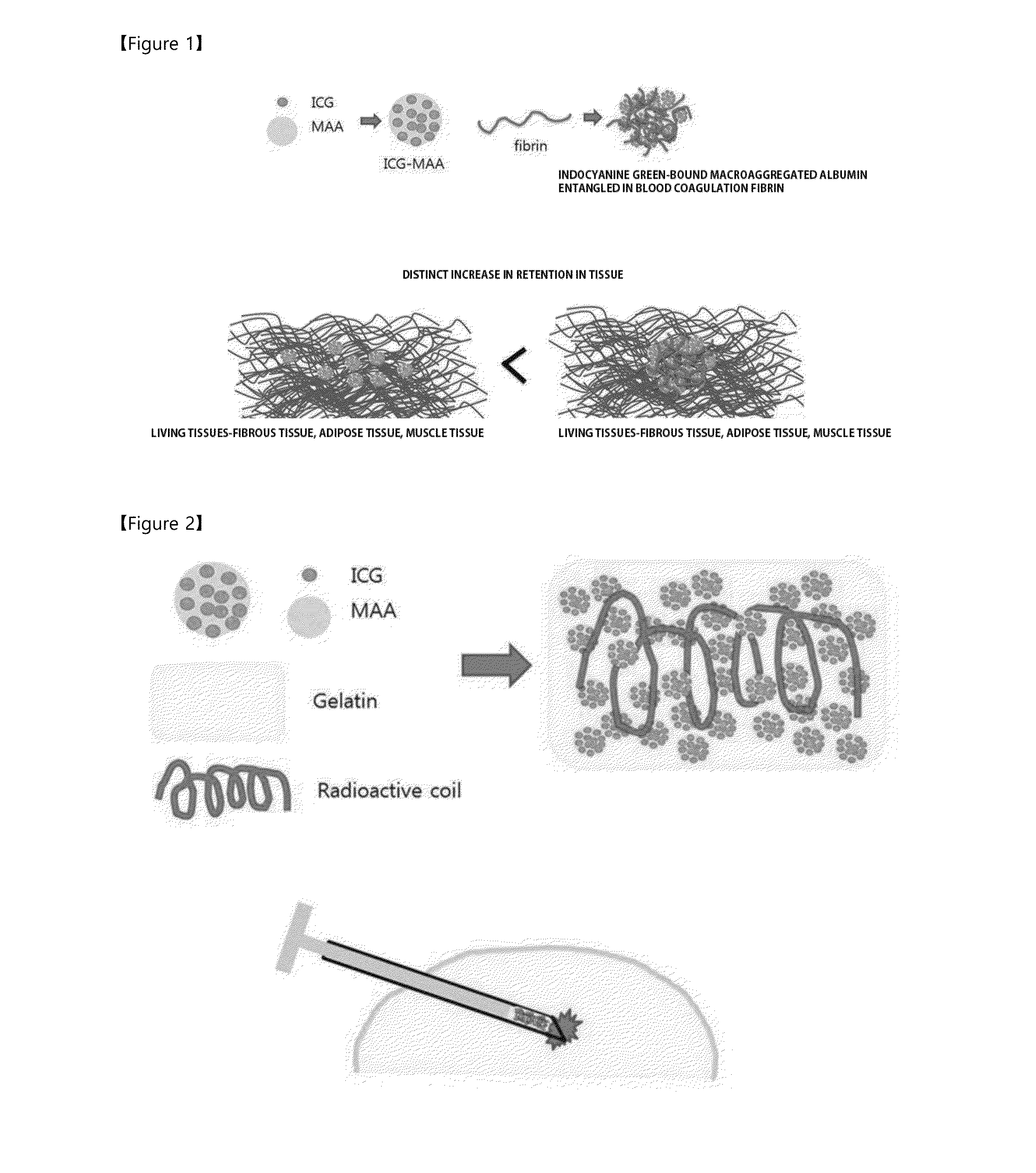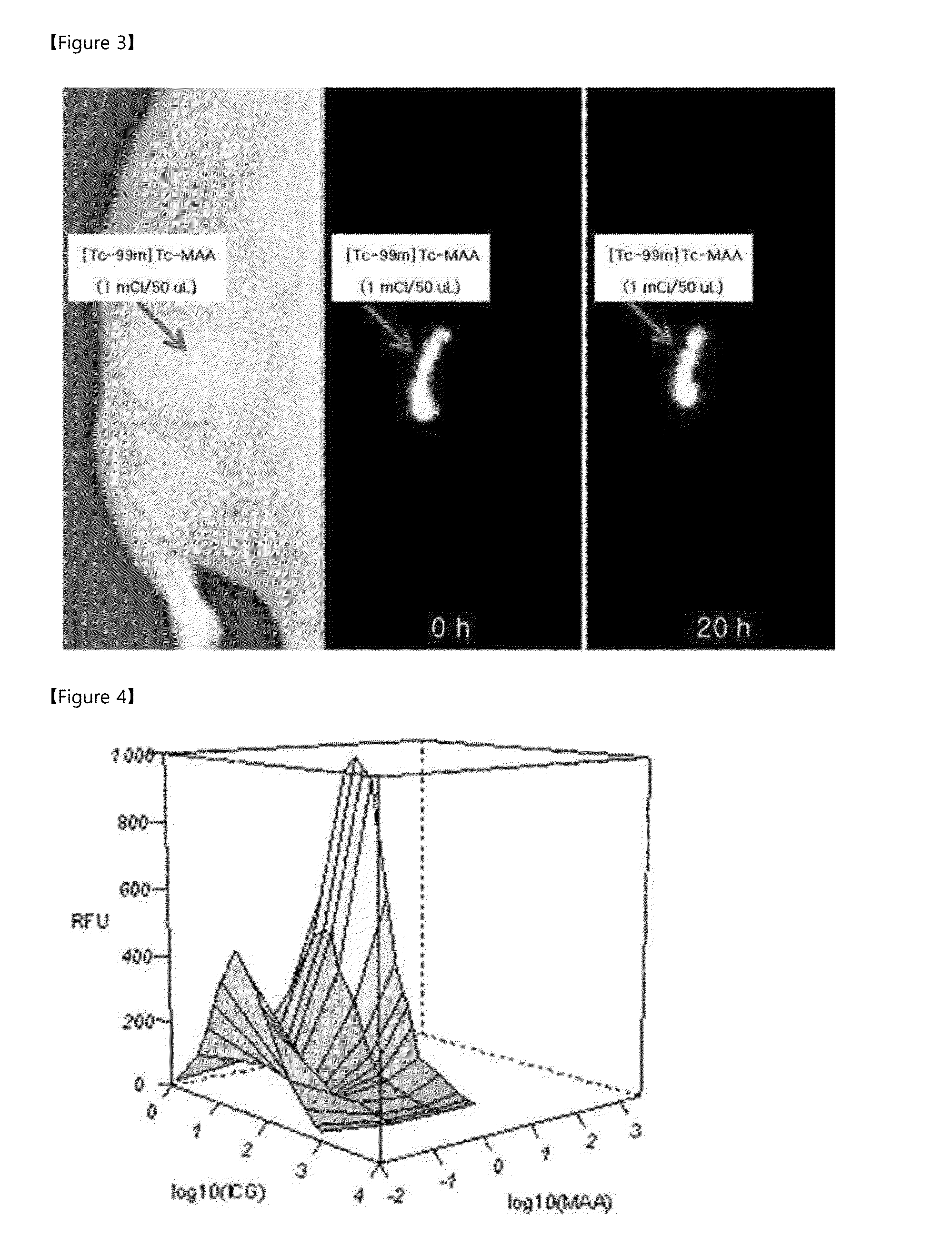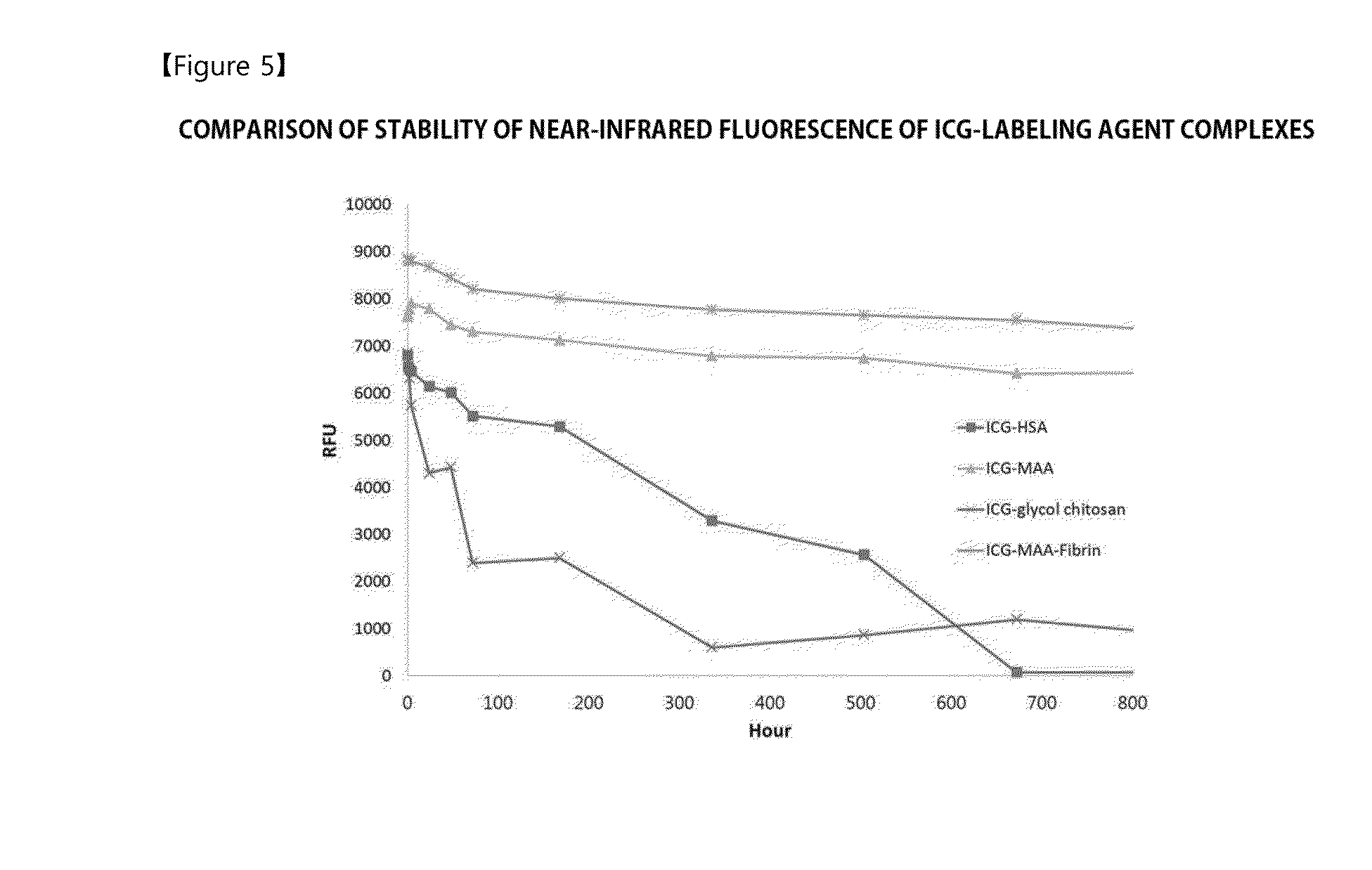Novel labeling composition for cancer lesion
a technology for cancer lesion and composition, applied in the direction of biological testing, peptide analysis, biological material analysis, etc., can solve the problems of rare and difficult to clearly distinguish the lesion, the diagnostic method may not be used during surgery, and the operating surgeon has little method to accurately identify the lesion in real time during surgery, etc., to achieve high in vivo compatibility, easy to see, and easy to degrade
- Summary
- Abstract
- Description
- Claims
- Application Information
AI Technical Summary
Benefits of technology
Problems solved by technology
Method used
Image
Examples
example 1
Construction of Macroaggregated Albumin (MAA)
[0048]10 ml and of 2% human serum albumin diluted in 0.1 M acetate buffer (pH 5.4) was mixed with 50 mg of tin chloride, and vigorously stirred for 10 minutes at room temperature followed by additional stir for 20 minutes at 70° C. for reaction. After the reaction was stopped, the reactant was cooled. Then, 0.35 ml and of 20% human serum albumin was added, and the resultant was stirred again for 10 minutes. The reactant was aliquot to a glass vial (2 mg for each, based on MAA) and lyophilized to prepare thiol MAA.
example 2
Radioactive Isotope-Bound MAA Complex and Investigation of Availability Thereof
[0049]2 ml and of [Tc-99m]TcO4− (10 mCi / ml), which is a radioactive isotope, was added to the thiol MAA constructed in Example 1. The resultant mixture was reacted for 10 minutes at room temperature to construct a radioactive isotope-bound MAA complex ([Tc-99m]Tc-MAA). To investigate whether the radioactive isotope normally binds to MAA, the complex is applied on instant thin layer chromatography (ITLC), and developed by using acetone as a solvent, and, as a result, it has been found that at least 99% of thiol MAA binds to the radioactive isotope, thereby forming a complex.
[0050]In addition, to investigate whether the constructed complex may be used as an in vivo labeling agent, an experiment was performed as follows: the constructed [Tc-99m]Tc-MAA 1 mCi / 50 μl was injected into a left buttock of a nude mouse. A gamma image of the nude mouse was taken by using an animal SPECT device (NanoSPECT, Bioscan) at...
example 3
Preparation of Indocyanine Green (ICG)-Bound MAA-Based Labeling Agent and Investigation of Availability Thereof
[0051]Since it has been expected that a complex, in which MAA binds to indocyanine green (ICG) capable of generating a near-infrared fluorescent signal, may be used as a labeling agent stably acting in vivo, the complex was constructed and availability thereof as an in vivo labeling agent was investigated.
PUM
| Property | Measurement | Unit |
|---|---|---|
| diameter | aaaaa | aaaaa |
| diameter | aaaaa | aaaaa |
| near-infrared wavelength | aaaaa | aaaaa |
Abstract
Description
Claims
Application Information
 Login to View More
Login to View More - R&D
- Intellectual Property
- Life Sciences
- Materials
- Tech Scout
- Unparalleled Data Quality
- Higher Quality Content
- 60% Fewer Hallucinations
Browse by: Latest US Patents, China's latest patents, Technical Efficacy Thesaurus, Application Domain, Technology Topic, Popular Technical Reports.
© 2025 PatSnap. All rights reserved.Legal|Privacy policy|Modern Slavery Act Transparency Statement|Sitemap|About US| Contact US: help@patsnap.com



